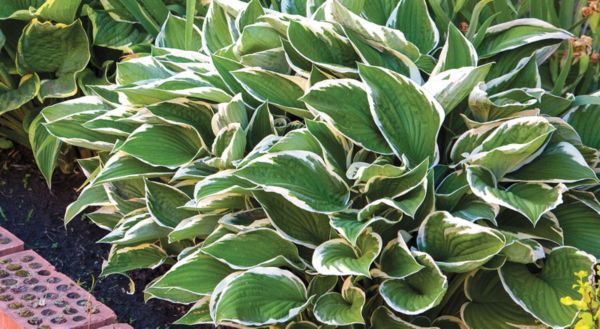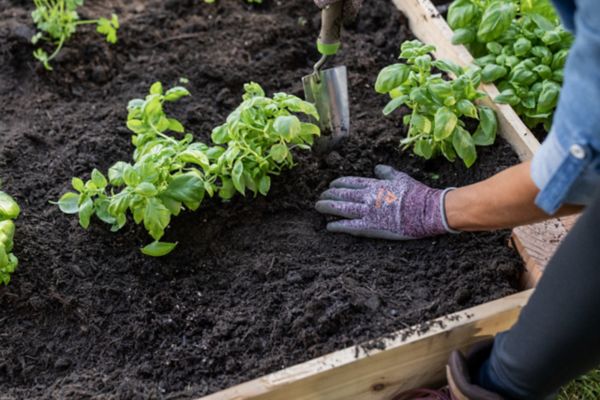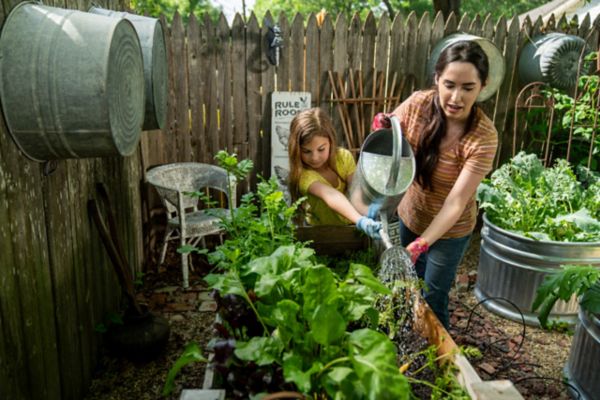How to Grow Thyme
Authored by Leah Chester-Davis
Thyme is perhaps one of the top five plants to grow in any herb garden, though not all types of thyme are suitable for culinary use.
When anyone says you can never have enough time, perhaps that applies to both how we measure our days and to the delightful herb known as thyme. When it comes to the plant, it deserves a place in nearly every garden. Think of it as the little black dress of the garden. It’s perfectly suited to simple affairs like a small herb garden, it is at home in a wide range of Thyme container combinations, and it even can go upscale and have a starring role in one of the fanciest of gardens, such as King Charles’s Highgrove, where he installed the famous Thyme Walk several years ago. Lucky for us, it doesn’t take the bank account of royalty to enjoy this versatile, timeless plant in our gardens.
Its essential oils are used in many personal products such as perfumes and deodorants. As a culinary herb, thyme is used to flavor meat dishes, soups, stews, sauces, and dressings. It can be used fresh or dried and is relatively easy to harvest and dry.
Thyme is a low-growing plant with thin, woody stems and tiny, fragrant flowers. The foliage may be silver green, yellow green, deep green, or bright green edged in white. Woolly thyme has hairy leaves. Small, delicate blooms are white, pink, or lavender.
About thyme
| Botanical name: | Thymus spp. |
| Common name: | Thyme |
| Plant type: | Perennial |
| Size: | 6 to 12 inches |
| Sun exposure: | Full sun outdoors; sunny window indoors |
| Soil type: | dry, sandy, rocky; must be loose and well-drained |
| Soil pH: | 6.5 to 7 |
| Hardiness zones: | 4 to 9, depending on the type |
| Average first frost: | Varies by region |
| Average last frost: | Varies by region |
| Container friendly: | Yes |
| Beginner friendly: | Yes |
Growing
Thyme thrives in sunny locations. It grows best in dry, sandy, or rocky soil that is loose and well-drained. It does not require richly fertile soil, which can result in the plant overproducing foliage that is poor in flavor, an important consideration when growing for culinary uses. It prefers soil that is more neutral than acidic or alkaline, such as a pH around 6.5 to 7. If you are unsure of your soil’s pH, check with your county Extension office for a soil test kit, which should be available for free or a nominal fee.
Depending on the type, it grows in either an upright form or as a creeping mat.
It will grow from seed, or you can buy plants from the garden center.
There are more than 400 species of thyme. Consider your intended use when selecting. Here are a few popular choices and their uses.
Common thyme
Common thyme or garden thyme (Thymus vulgaris) is the type grown mostly in herb gardens for culinary use. It’s also a great plant to grow in vegetable gardens or even in rock gardens or at the front of borders. Both its tiny leaves and its lilac flowers that are borne in small clusters are quite aromatic. It grows well indoors in a sunny window.
Lemon thyme
Lemon thyme (Thymus x citriodorus) is typically grown as a culinary herb, thanks to its lemon-scented leaves. It is a great addition to herb gardens, containers, rock gardens or at the front of a border. Place it where you can enjoy its lemony fragrance. There are also other citrus options with foliage that smells like limes or oranges.
Creeping thyme
Creeping thyme (Thymus serpyllum) is often grown as a groundcover. It grows in average, well-drained soils in full sun. Sometimes called mother-of-thyme, wild thyme, or elfin thyme, it has glossy blue-green leaves and forms a foliage mat about 2 to 3 inches high and spreads to 18 inches wide. It is a fragrant creeper and has pink to purple flowers in the summer. Use it as a small area groundcover or a filler between stepping stones or to edge a patio or border.
Wooly thyme
Woolly thyme (Thymus pseudolanuginosus) is a creeping thyme that is used as a groundcover. It has hairy or fuzzy gray leaves, and it forms a flat mat about ½ to 1 inch tall and spreads to about 12 inches wide. It isn’t suited to culinary use. Consider it for a filler between steeping stones or in a rock garden.
There are over 400 species of thyme.
Planting
Plant thyme in the spring. Work or cultivate the soil to a depth of 12 to 18 inches. Average soil or hard soils such as clay may benefit from 2 to 4 inches of organic matter to help ensure good drainage. Mix it well with the existing soil. Thyme does not need overly fertile soil, but it does require good drainage. It derives from the Mediterranean region and prefers soil on the dry side. It will not tolerate wet feet. Cite this plant in a spot with plenty of sun, at least 8 hours each day.
If growing in a container, choose one with drainage holes or add them by drilling into the bottom of the container. Fill container with a quality potting mix that drains well.
Water as needed and do not allow the soil to dry out completely for any length of time. During prolonged hot, dry spells, water thoroughly once each week. Plants in containers typically need to be watered more often. During particularly hot, dry periods, they may need water daily. Do not allow plants to wilt between waterings.
If growing more than one thyme plant in the garden, such as several different citrus types, give them plenty of space, at least 12 inches apart to distinguish the different flavors.
Thyme can handle winters in zones 4 to 9, depending on the type, though soggy soil and freezing and thawing conditions can be detrimental to the plant. Straw mulch or a pile of leaves around 2 to 5 inches deep and thick can add some protection during the winter. Colorado State Extension recommends watering once a month during dry periods in the winter.
Thyme can be dug up, potted, and brought indoors for the winter.
Thyme can be grown from seed, from divisions, or from cuttings.
Sowing seeds
If sowing from seed, start in small peat pots filled with a seed-sowing potting mix. Scatter the seeds over the surface and lightly cover with the potting mix. Place under fluorescent or grow lights. Take care when watering to avoid washing them out of the peat pot. Keep moist until they become established.
Cuttings
If taking cuttings from an older plant, simply strip the lower leaves and stick the cutting in potting mix or prepared soil in the ground. The cuttings should root in a few days.
Propagating
Propagating by division means you dig up the plant and cut the crown and root system into two or more parts.
Another choice is to look for small plants that are available in most garden centers. Either propagating by division or buying new plants gives you a head start on growing this herb.
Thyme can handle winters in zones 4-9.
Fertilizing
Thyme and other herbs grown outdoors may not need fertilizer at all. Rich, fertile soil results in rapid growth and affects the oil and flavor content that makes herbs so desirable. If planting with other herbs or plants in a garden bed, Minnesota Extension recommends fertilizing sparingly. Use a 5-10-5 fertilizer at the rate of 3 ounces (about 88.72 ml) for every 10 feet of row. Apply only once during the growing season.
Herbs in containers may benefit from slightly more fertilization than those grown in garden beds. Minnesota Extension recommends using a liquid fertilizer at half the strength recommended on the label once every six weeks for herbs indoors and every 3 to 4 weeks for outdoor containers. Cease fertilization during the winter.
Controlling Pests, Diseases, and Other Problems
Thyme has few problems with insects and other pests. As mentioned, it can get root rot in soggy soils.
Apply fertilizer only once during the growing season.
Harvesting and Storing
Cut small stems, about 4 to 8 inches long, depending on the size of your plant, throughout the season to enjoy in culinary dishes. The best time of day to harvest thyme for the best oil content is during the mid-morning when the dew has dried and before it gets hot. To use fresh thyme, simply hold the woody stem at one end with one hand and use the other hand to pinch the stem between your thumb and forefinger, running your hand down the stem to strip the stem of its leaves.
Thyme can also be dried. Cut before the herb blooms to keep more flavor in the leaves. Tie five or so stems together into a small bunch and hang upside down in a dark, warm, well-ventilated area to dry, or lay stems flat on some type of screen to provide good air circulation. After about seven days and when the stems are dry, strip the leaves from the stems and place the leaves in a container with a tightly fitted lid. Discard the stems.
When the plant blooms, the leafy stems and flowers add texture, color, and fragrance to small nosegays or bouquets, particularly charming when mixed with other herbs for the kitchen counter.
Storing
Thoroughly dried thyme leaves that are stored in a container with a tightly fitted lid will keep their flavor for about a year. Fresh thyme can be stored for a few days in the refrigerator in a ziptop bag with a paper towel or napkin added to absorb extra liquid.
Harvest herbs in the morning after the dew dries but before the mid-day heat, or during the evening after sunset.
Expert Tips
- Thyme is a great filler in spring containers. Pair it with a combination of lettuces or with pansies, violas, and snapdragons.
Frequently asked questions
How do I care for thyme that has become quite woody and messy looking?
Over a period of a few years, thyme can indeed become quite woody, particularly if it isn’t clipped regularly. You could try a couple of things. One, cut it back to 2 inches and see if that helps it regenerate. Also, this is a way to harvest the entire plant at the end of the season. Another route is to replace woody, unsightly plants with new plants.





